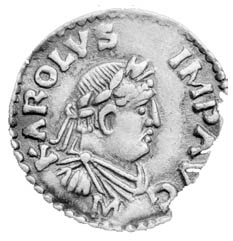There you have it for starters. Charlemagne allegedly set up a system where silver coins formed the foundation for the money system.
The currency of ancient Rome always carried an image of the emperor. This was to show that the coinage could be used for exchanges and to pay the taxes of the Roman Empire. The Romans’ complex administrative structure and coinage disappeared when the empire collapsed, however.
In Merovingian kingdoms, a sophisticated taxation structure had not developed, so the currency did not always carry a picture of the king. Charlemagne attempted to regularize the currency during his reign, although he never achieved regular taxation of the kingdom.
http://www.departments.bucknell.edu/history/carnegie/charlemagne/didyouknow.html
How much effort is displayed here to the effect that Charlemagne was a sovereign Emperor? And how much effort is displayed in ignoring the fact that there was also an Emperor in Byzantium!
A clear sign of sovereignty is gold coinage and in the West gold coinage was for the first time minted in the 12th century in England and used exactly for the purpose of declaring sovereignty. Gold coins used in the west until then were Gold coins minted in Byzantium. The reason Charlemagne did not wish to mint gold coinage was not that he preferred silver, but there was no jurisdiction for it;
Charlemagne lacked sufficient sovereigntyto be able to mint gold coins!
The issue of Charlemagne not being able to mint gold is a clear sign for the superior position of Byzantium at that time and that the crowning of Charlemagne was only a first step in the development of sovereignty in the West.


You have a real talent for writing unique content. I like how you think and the way you express your views in this article. I am impressed by your writing style a lot. Thanks for making my experience more beautiful. swiss
ReplyDelete